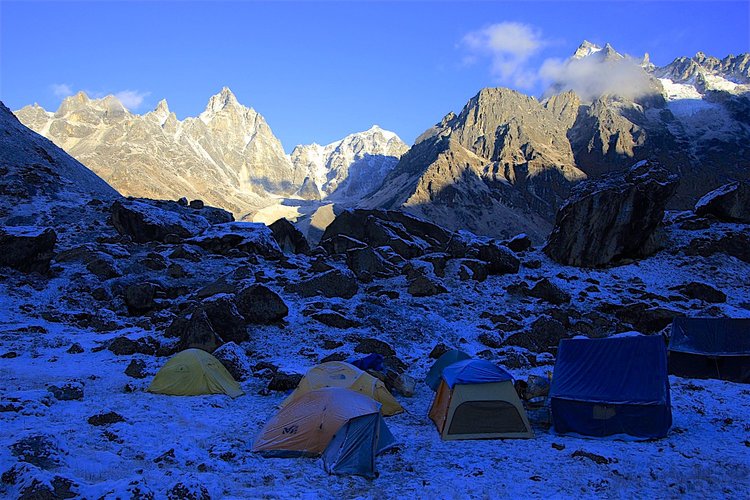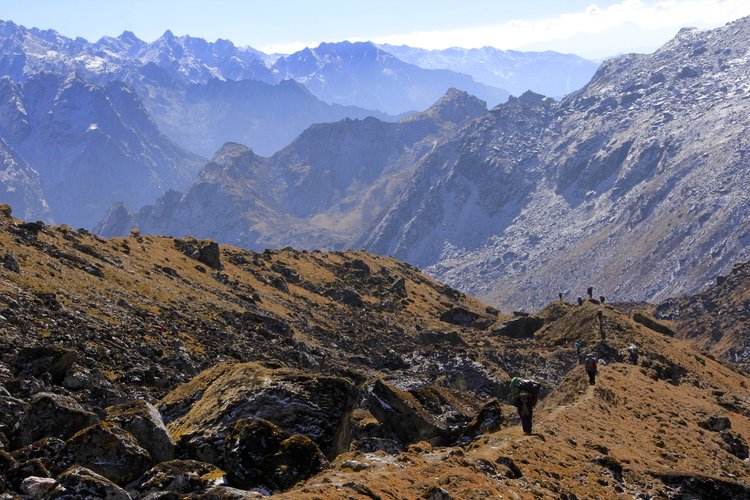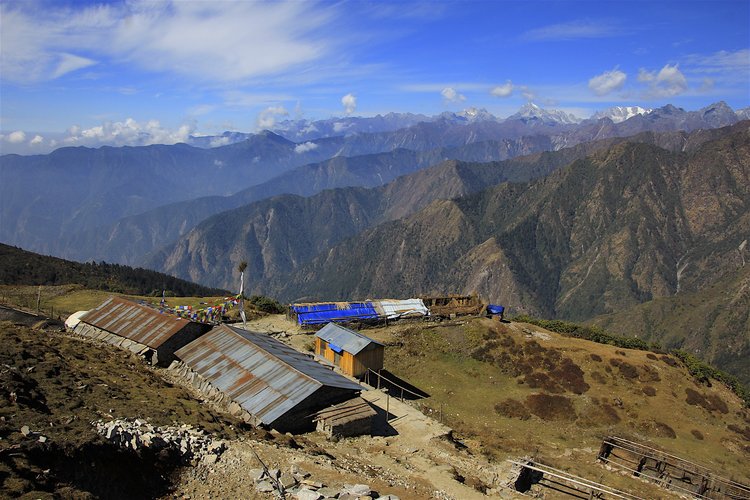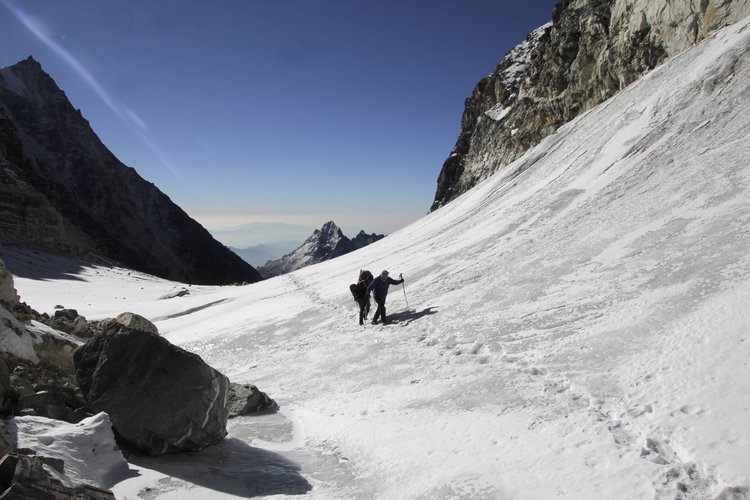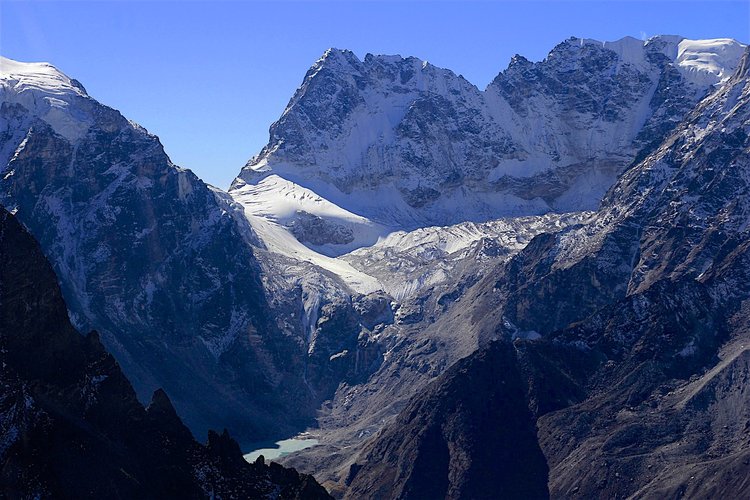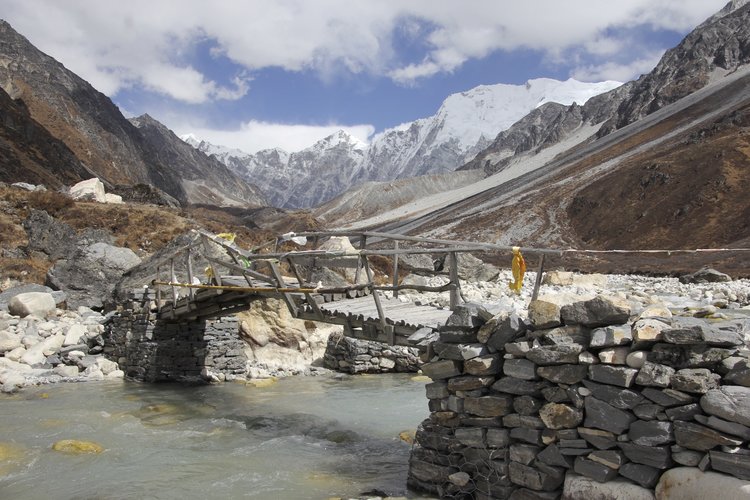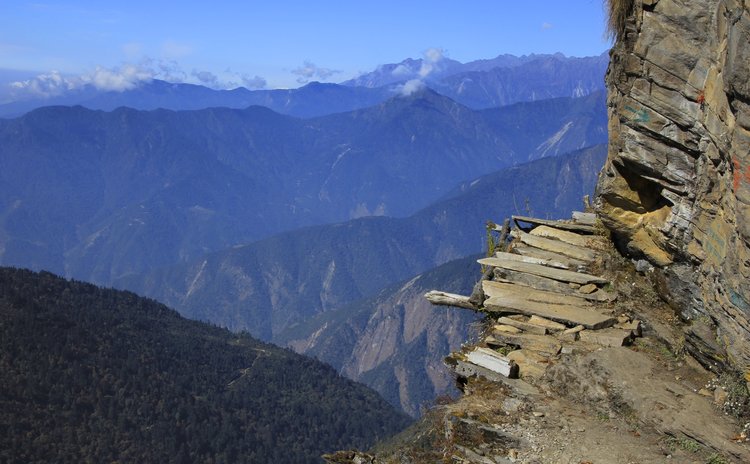Day 01 – Arrival in Kathmandu and escort to hotel – upon your arrival in Kathmandu, we will pick you up from the Tribhuwan international airport then you will be transfer to hotel. Your hotel will locate in center of the Kathmandu called Thamel, which is one of the tourist hubs of Nepal.
Day 02 – Exploration of Kathmandu valley – You will explore historical and religious sites of Kathmandu valley called Pashupatinath temple, Baudhanath Stupa, Patan Durbar squire and Swayambhunath, which are recorded as world heritage sites by UNESCO. After exploration of these beautiful places you will return back to hotel and your guide will brief about trekking route, trekking equipment and preparation for the trip.
Day 03 – Drive to Syabrubensi (1460m.a.s.l) – 7 hours drive – Syabrubensi is 120 kilometers far from Kathmandu city and the buses and Jeeps takes about 7 hours to get there. During the driving period; we will have beautiful views of agricultural terraced field, green hills, Trishuli river valley, dozens of settlements and stunning view of Ganesha Himal from window of vehicle. There are dozens of guesthouses in Syabrubensi where we will spend a joyful night.
Day 02 – Trek to Sherpa Gaun (2563m.a.s.l.) – 5 hours walk – Most of the trekkers follows the main trekking trail that leads just bank of the Langtang River but trek via Khangjim village would be pleasant walk because of more scenery and picturesque. The trail passes through the moraines and purpose to see green forest, charm landscapes, River valleys, and dozens of villages and as well as superb view of Ganesha Himal. Begins of the trek we will walk on the road and appear a suspension bridge and trail junction of way to Lama Hotel and Sherpa Gaun. We will turn to the left hand side to take upper trail to get khangjim village that may takes about two hours then rest of the trek would be pleasant due to walk on gradual up trail to get Sherpa Gaun.
Day 03 – Trek to Ghodatabela (3030m.a.s.l.) – 6 hours walk – Early in the morning we will walk about 2 hours to get Lama Hotel village with the view of green landscape, rocky hills River valleys and moraines. The trail from Lama Hotel to Ghodatabela is mostly climb up, passes through the forest of pine, oaks, bamboo, Rhododendrons, sandalwood so possibly to see some wild life such as deer, monkeys, mussels and Himalayan Thar. The Ghodatabela is not a settlement; there are only two basic guesthouses but still enough for around 50 trekkers and their trekking crews. From the yard of guesthouse we can see breathtaking view of Langtang Lirung; which is highest mountain of the Langtang region.
Day 04 – Trek to Langtang village (3430m.a.s.l.) – 3 hours walk – Langtang Village is not so far from Ghodatabela and trek would be very pleasant due to breathtaking view of Langtang Lirung, gigantic rocky landscapes and wide meadows. We will walk along the Langtang River pass by two small villages called Thangsyap and Chyamki. There are hundreds of Stupas and Chortens, which are built with stone slates and carved image of Buddhist deities and Mantras. After Lunch in Langtang village, we will explore a small monastery, located just bottom of the Langtang Lirung and hike around the village that settled after the earthquake 0f 2015.
Day 05 – Trek to Kyanjing Gompa (3830m.a.s.l.) – 3 hours walk – we will head towards Kyanjing Gompa pass by two small villages called Mundu and Sindum, settled just bottom of the huge rocky hills. En route we will see dozens of Stupas, Chhortens, Prayer wheals, Mani walls, Kani Gates and breathtaking mountain views of Nayakang, Langshisa, Yala peak, Gangchenpo, Yubra, Tserko peak, Kinshung and Langtang Lirung. After lunch in Kyanjing Gompa we will climb up to Kyanjing RI that offers to see all mountain ranges of Langtang valley, wide meadows and beautiful sunset on the background of White Mountains.
Day 06 – Sight trip to Tserko Ri view point (4984m.a.s.l.) – 7 hours walk – There are many sight trips around the Kyanjing Gompa Village known as Kyanjing Ri view point, Langshisa Kharka, Langtang Lirung base camp and sight trip to Tserko Ri view point. Among of them sight trip to Tserko Ri view point is being popular than others due to see panoramic mountain view of Langtang Lirung, Dorje Lakpa, Ganchenpo, Langsisha, Kinsung, Yala Peak, Nayakang, huge glaciers, glaciated lakes and wide meadows and gigantic pasture land. Begins of the trek we have to walk about 40 minutes on the flat trail to get a small stream then the trail gently ascend to the Tserko Ri viewpoint and an approximately 3 hours ascend bring us to this beautiful place.
Day 07 – Trek Langshisa Kharka (4080m.a.s.l) – 4 hours walk – The pleasant trail lead us north east gorge of Kyanjing village with stunning mountain views, beach of Langtang River, rugged moraines, Lakes, wide meadows and grazing yaks. After three hours walk on the flat trail appear a small stream then we will climb up approximately one hour to get Langshisa kharka. Langshisa kharka offers to see magnificent views of Langshisa RI 7427m, Dorje Lakpa 6966m and its beautiful ranges and glaciers. There are not guesthouses in Langshisa Kharka so we will set up our tent and kitchen.
Day 08 – Trek to Moraine Camp (4580m.a.sl) – 5 to 6 hours walk –The morning offers to see breathtaking views of Dorje Lakpa, Langshisa, Ganchenpo peak, beautiful meadows and gigantic pastureland. Trek from Langshisa Kharka to Moraine camp is very tricky path due to walk on the glacier, rocky path and frozen streams so we have to pay big attention to safe from the crevasses, slippery steps and shaky rocks. Moraine camp is situated nearby Langshisa RI glacier and purpose to see dozens of snowcapped peaks, glacier, glaciated Lakes and rugged rocky hills. After reaching in Moraine camp we will find out the water source and safety place to set up our tent to spend another joyful night.
Day 10: Trek to Yak Kharka (4825m.a.s.l) – 7 to 8 hours walk – we will start our trek earlier than previous days due to cross over the Tillman pass and long descends to the Yak Kharka. The trail gently ascends from the campsite and leads us to Tillman pass through rocky, icy and slippery trail so we have to be very careful to move our steps to safe with crevasses and rocky holes. After 4 hours walk from moraine camp we will be top of the Tillman pass that offers to see astonishing views of Urkeimang peak, Gangchenpo peak, Tembathang peak and its ranges and some of the peaks from Tibet. From here, we will descend via rocky path about 500 meters to get Yak Kharka where we will set up our tent and spend a joyful night.
Day 10 – Trek to Tin Pokhari (3735m.a.s.l) – 6 hours walk – After breakfast, we will start our journey to Tin Pokhari, which mean three Lakes. The descended trail leads us through the rocky moraines, grassy cliffs and rugged ridge with charms views of mountain chain and awesome landscapes. The tin Pokhari is beautiful campsite, surrounded by hills and commands to see three beautiful Lakes and high Himalayas. Beyond the high Himalayas and nature views, we will see some of the wildlife as blue sheep, marmot, Tibetan snow cock, Pheasant, Himalayan Thar and many species of Himalayan birds and butterflies. We will set up our tent nearby the Lake and spend another joyful night in Tin Pokhari.
Day 11 – Trek to Panch Pokhari – Five Lakes (4060m.a.s.l) – 6 hours walk – we will head towards Panch Pokhari, which is a sacred Lakes and visiting by thousands of Hindu pilgrims during the Janaipurnima in full moon day of August. The often up and downhill trail passes through the forest with splendid mountain views, charming landscapes, green hills, pastureland and cascading waterfalls. After 5 to 6 hours walk bring us to Panch Pokhari, which are very beautiful and tranquil situated near to each other.
Day 12 – Trek to Nasim or Nasem Pati (3745m.a.s.l) – 4 to 5 hours walk – The trail from Panch Pokhari to Nasem Pati is really tricky and moderate due to walk on descended rocky and slippery steps. On the first part of the trail, we will walk downhill through well defined path for approximately two hours then the trail ascends to the Nasim Pati with breathtaking views of green landscapes, waterfalls, deep gorge and astonishing views of snowy mountains. Due to walk through the forest, we will have great opportunity to see some wildlife and many species of birds and butterflies. After arriving in Nasim Pati, we will set out our tent and spend a joyful night.
Day 13 – Trek to Bhanjyang (3414m.a.s.l) – 5 hours walk – Begins of the trek, we will ascend gradually through the rocky moraine and forest of Rhododendron, oak, pine and bamboos to get a hill top that commands to see beautiful landscapes, mountains and dozens of villages, which are settled over the vertical land. Most of the time we will do up and down and often appear forest, cultivated land, streams, wooden bridge and ridge to get Bhanjyang, which is our final destination of the day. If the weather is perfect and clear than we will have beautiful sunset view on the background of high mountains.
Day 14 – Trek to Pauwabas (3024m.a.sl) – 6 to 7 hours walk – The trail gently ascends from the campsite of Bhanjyang and passes through the forest, moraines, hilly ridge, cultivated land and valleys to get a hilltop. From here, we will descend again to the Pauwabas mean, pilgrim’s inn so we can see some nomads and shelters and shrines along the trekking trail. The major attraction of the day would be the views of Jugal Himal, Gaurishankar Himal, River valleys, villages and local peoples who are working in the farm.
Day 15 – Trek to Kami Kharka (2855m.a.s.l) – 6 hours walk – We will head towards Kami Kharka, which may takes 5 to 6 hours from Pauwabas. The trail is very similar like previous days, often up and downhill trail passes through the forest, valleys, moraines, rugged rocky cliffs, settlements and cultivated land where local people grows millet, maize, wheat, barely and many kinds of vegetables. Some of the hilltop offers to see massif views of Langtang Lirung, Dorje Lakpa peak and their beautiful ranges.
Day 16 – Trek to Sano Okhareni (2043m.a.s.l) – 6 hours walk – The trail descends from the campsite of Kami Kharka and passes through the dense forest of rhododendron, bamboo, oak and pine so we will get great chance to see some of the wildlife such as monkeys, deer, weasels and Langurs (White body and black faced monkey) and many species of birds and butterflies. The major attraction of the day would be the views of mountain vistas, charming landscapes, cascading waterfalls, streams, valleys and nomadic settlements of Tamang, Sherpa, Dalit, Chhetri and Brahman peoples.
Day 17 – Trek from to Chautara (1418m.a.s.l) – 5 hours walk – Today is last day of our trekking trip and heading towards Chautara, which is a beautiful town of Dolakha. The trail passes via dozens of villages with breathtaking view of Gaurishankar Himal, verdant cultivated field, green landscapes and green hills. After 4 to 5 hours walk from Sano Okhareni, we will arrive in Chautara where we will sleep in guesthouse instead of tent to celebrate our last night of the trek.
Day 18 – Drive back to Kathmandu – we will drive 7 to 8 hours to get Kathmandu valley from Chautara. During the driving period, we will have fascinating views of paddy field, dozens of villages and towns, River valley, green hills, waterfalls and astonishing view of Gaurishankar Himal from the window of Jeep.
Day 19 – Final Departure – After successful trip of Tillman pass trek you will fly back to your home with great experience of outdoor and many tales about mountains, jungles, colorful Nepali people and their unique culture, tradition and costumes that makes you a storyteller among your friends and colleagues.
